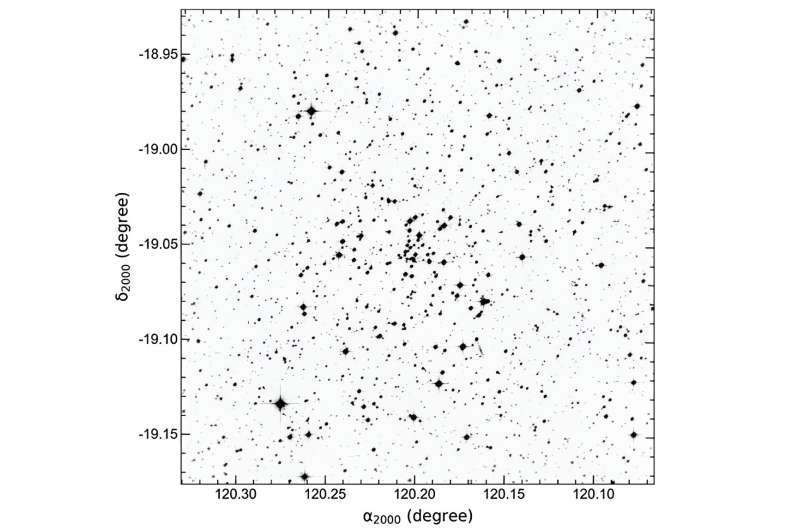
Turkish astronomers investigate open cluster NGC 2509 (Image Credit: Phys.org)

Using data from ESA’s Gaia satellite, astronomers from the Istanbul University have inspected a Galactic open cluster known as NGC 2509. Results of the study, published September 10 on the pre-print server arXiv, deliver important insights into the structural and astrophysical parameters of this cluster.
Open clusters (OCs), formed from the same giant molecular cloud, are groups of stars loosely gravitationally bound to each other. So far, more than 1,000 of them have been discovered in the Milky Way, and scientists are still looking for more, hoping to find a variety of these stellar groupings. Expanding the list of known galactic open clusters and studying them in detail could be crucial for improving our understanding of the formation and evolution of our galaxy.
NGC 2509 is an intermediate age OC located in the constellation of Puppis. It is a poorly studied cluster and many of its properties are still uncertain or unknown. For instance, some studies report that NGC 2509 is located about 3,000 light years away, while others point to a much larger distance of at least 8,000 light years. The cluster’s age estimates are also debated as the results range from 1 to 8 billion years.
That is why Istanbul University’s astronomers Talar Yontan and Seliz Koç decided to investigate NGC 2509 by analyzing astrometric and photometric data from the latest Gaia Data Release 3 (DR3).
“We performed Gaia DR3 astrometric and photometric data-based study of intermediate-age open cluster NGC 2509. (…) We created the catalog of NGC 2509 by considering a 20 arcmin radius circular field from the cluster center,” the researchers wrote in the paper.
Given that OCs are mostly affected by foreground and background stars, the first goal of Yontan and Koç was to separate cluster members from field stars to determine more precise fundamental parameters of NGC 2509. Based on the data from DR3, they calculated membership probabilities of stars in the region of NGC 2509. This resulted in classification of 244 stars as most likely members with membership probabilities of over 50%.
By further analyzing the 244 identified stars, the astronomers found that NGC 2509 has a mean proper motion of -2.72 and 0.8 mas/year in right ascension and declination, respectively. The cluster’s distance was estimated to be approximately 8,200 light years, while its age is most likely 1.5 billion years.
The study also found that NGC 2509 has a limiting radius of about 16.7 light years and reddening of 0.1 mag. The metallicity of the cluster was measured to be at a level of 0.0152 dex and its central stellar density turned out to be about 32.33 stars/arcmin2.
More information:
T. Yontan et al, Astrophysical Parameters of the Open Cluster NGC 2509, arXiv (2023). DOI: 10.48550/arxiv.2309.05037
Journal information:
arXiv
© 2023 Science X Network
Turkish astronomers investigate open cluster NGC 2509 (2023, September 19)
retrieved 27 September 2023
from https://phys.org/news/2023-09-turkish-astronomers-cluster-ngc.html
part may be reproduced without the written permission. The content is provided for information purposes only.





